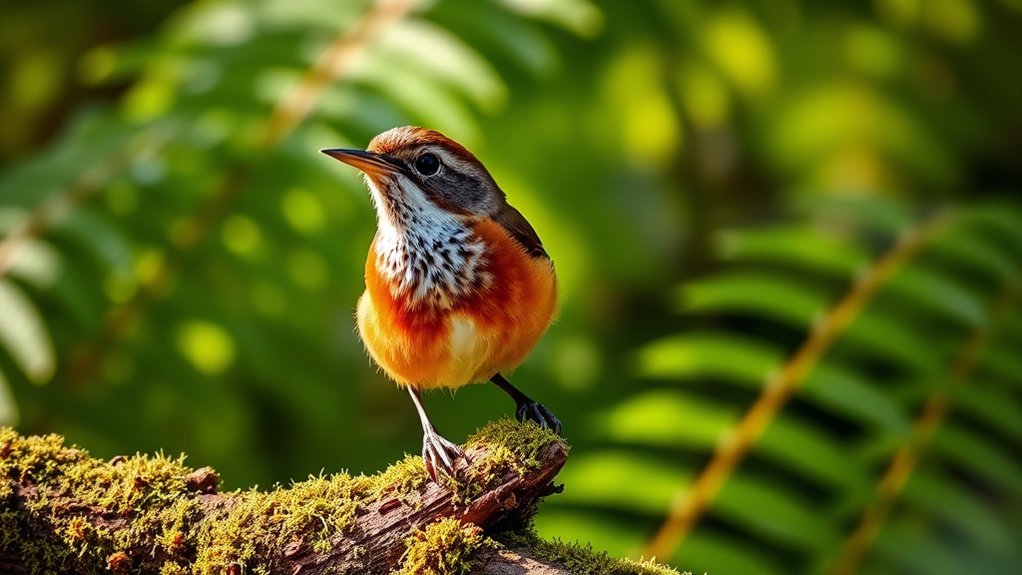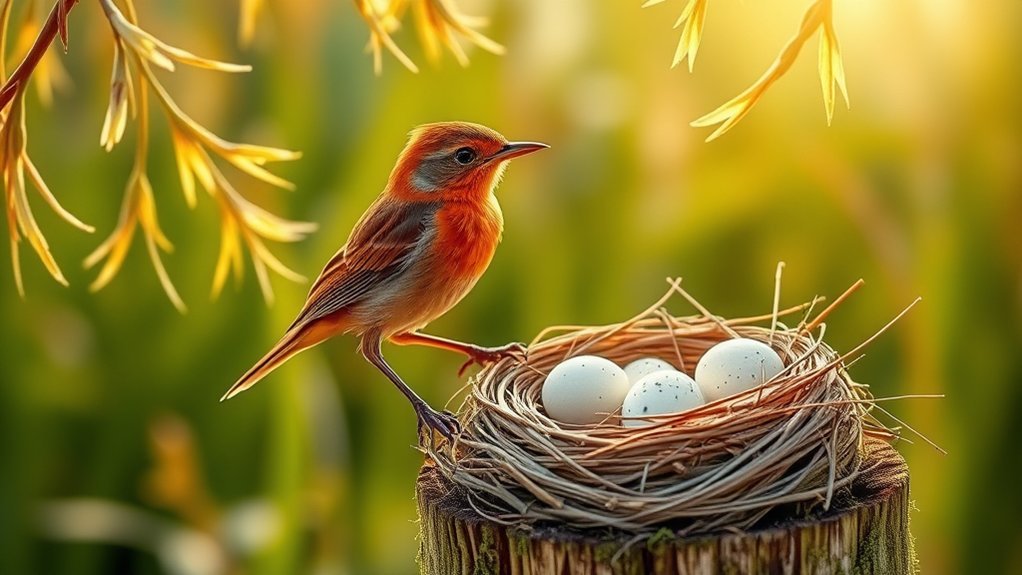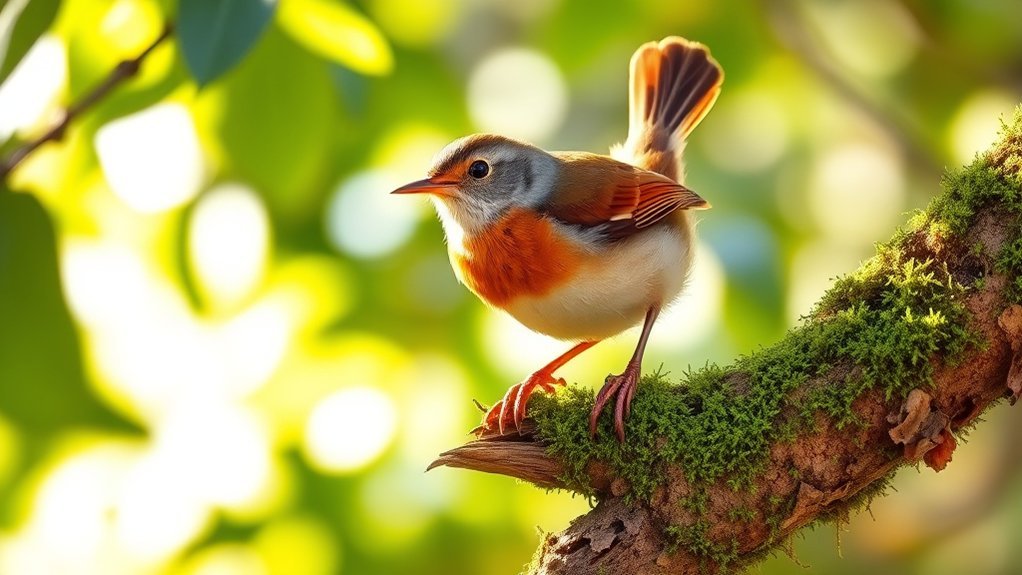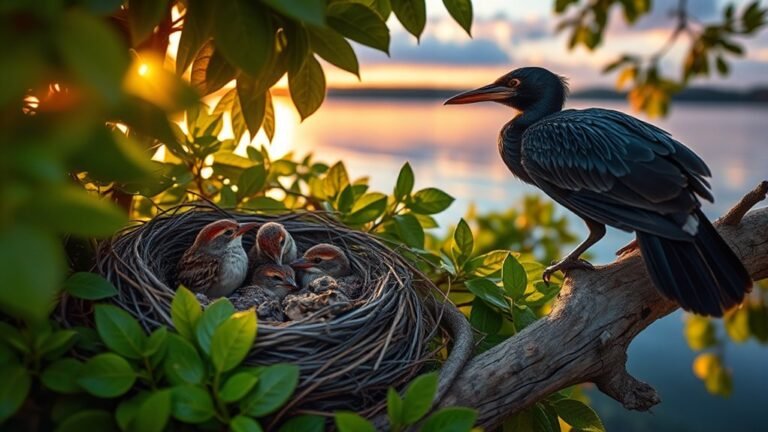South Carolina’s State Bird: Facts and Information
South Carolina's state bird is the Carolina wren. This small bird has brown feathers and a cheerful song that many people love. It plays an important role in nature.
The Carolina wren is easy to spot. It likes to live in woods, gardens, and even backyards. This bird enjoys finding insects and seeds to eat. Its ability to adapt to different places helps it thrive in South Carolina.
The Carolina wren also holds cultural meaning in the state. Many people enjoy its lively songs and friendly presence. It feels like a little piece of nature right where we live.
What do you think makes the Carolina wren a special symbol of South Carolina?
A Quick Overview
The Carolina wren is South Carolina's state bird. This little bird is full of energy and has a happy song. It likes to live in places with lots of plants, like gardens and woods. You can often find it near water.
Carolina wrens eat many different foods. They mainly snack on insects, seeds, and berries. This helps them survive in all seasons.
They start to have babies between late March and August. They build nests using twigs and grass. Both mom and dad wren take care of the little chicks.
In 1948, the Carolina wren became the official state bird. It represents the beautiful wildlife and nature of South Carolina. These lively birds bring joy to everyone who sees and hears them!
Overview of the Carolina Wren

The Carolina Wren is a small and lively bird. It's South Carolina's state bird because of its unique traits and energetic personality. You can often see these birds in gardens and woods. They love to eat insects and seeds.
Carolina Wrens are curious and adaptable. They search for food energetically, hopping around and investigating their surroundings. When they're with their mates, they make different sounds. This singing creates a nice atmosphere for those nearby.
These birds usually mate for life and form strong bonds with their partners. This behavior helps create a sense of community among those who watch them.
Learning about the Carolina Wren can help you appreciate this colorful bird even more. They play an important role in South Carolina's natural environment, making it special for everyone.
Physical Characteristics
The Carolina Wren is a small bird that measures about 4.5 to 5.5 inches long. You can easily spot it because of its round body, long tail, and special features.
The bird has beautiful brown feathers with some lighter streaks on its wings. Its throat is a creamy white, which makes it look friendly and inviting.
Generally, Carolina Wrens have a sturdy body shape. They often hold their long tails up, which adds to their lively and cheerful vibe.
With bright, curious eyes and a happy song, these birds bring joy to the natural spaces in South Carolina. They're truly delightful to watch!
Habitat and Distribution

Carolina Wrens live in many different places in South Carolina. They like areas with lots of bushes and trees where they can find food and stay hidden. You can see these birds in wooded spots, thick shrubs, and even in gardens in neighborhoods. They often choose places with low plants because it helps them blend in while they look for food.
These birds are found all over the southeastern United States. Their range goes from southern New Jersey all the way to parts of Texas. In South Carolina, they're especially common along the coast, where the warm and humid weather is just right for them.
Knowing where Carolina Wrens like to live helps us appreciate the nature around us and the role these charming birds play in their environment.
Diet and Feeding Habits
Carolina Wrens are lively birds that need food to stay healthy and active. They're great at searching for snacks in their environment. You can often see them digging through leaves and listening carefully for sounds.
These birds like to eat insects, seeds, and berries, and they can switch what they eat based on what's available.
In spring and summer, they focus on eating protein-rich insects. This food helps them grow strong and gives them energy. When winter comes, they often eat more seeds and berries. This shows how flexible they're in finding meals.
Watching how Carolina Wrens forage can help you admire their cleverness and see how they fit into South Carolina's lively ecosystem.
Breeding and Nesting Behavior

Carolina Wrens are pretty amazing birds when it comes to raising their young. They build nests from late March to early July. These nests can be found in secret spots like thick bushes or even in some odd places like old shoes!
The birds use twigs, grass, and feathers to make their nests cozy. After the female lays three to seven eggs, she sits on them to keep them warm for about 12 to 16 days. While she does this, the male helps out by bringing her food.
Once the eggs hatch, both parents work together to take care of the baby birds. They make sure the chicks get enough food and attention to grow healthy.
This teamwork is important and shows how much they care for their family. It also creates a nice community feel among them.
Vocalizations and Communication
The Carolina Wren is a small bird known for its unique sounds. These sounds help them communicate with each other. You'll notice that their songs are full of cheerful notes that fill the air.
These songs help attract mates and mark their territory, showing other birds who's in charge.
When a Carolina Wren wants to claim its space, it makes strong calls that reflect its bold nature. You can even try to mimic their sounds to connect with nature and learn more about these fascinating birds.
Adaptability and Resilience
The Carolina Wren is a clever little bird. It shows us how well it can adapt and bounce back in different places. This bird lives in many spots, like thick forests or friendly suburban gardens. Its loud calls help it mark its territory and find a mate. This is important for its survival.
You can see how the Wren adjusts to changes in the seasons. It finds places to stay warm and food to eat, which shows how well it adapts to its environment. The Wren eats a variety of things, like insects and berries, which keeps it healthy all year long.
This bird also faces different challenges, especially with changing weather. Its ability to keep going makes it truly charming.
If you look closely, you might feel inspired by the Wren's strength in tough times. You can learn a lot from this little bird about being strong and adaptable in your own life.
Role in the Ecosystem
Carolina Wrens are little birds that play an important role in nature. They help control insect populations by eating a variety of bugs. This keeps the number of pests down and helps keep the environment balanced.
These birds are also a food source for bigger animals like birds of prey and some mammals. This shows how they fit into the food chain and support other wildlife.
When you see Carolina Wrens, it usually means the area is healthy and has a good mix of plants and animals. Their presence helps make local ecosystems rich and diverse.
Conservation Status
Carolina Wrens are cute birds that live in many places, but they face some problems that can affect their numbers. Urban development and habitat loss reduce their homes, making it harder for them to find places to nest and food to eat.
We can help Carolina Wrens by supporting local groups that work to protect their habitats. Simple actions, like planting native bushes and trees in our yards or neighborhoods, can provide these birds with better homes.
We can also talk to others about the importance of protecting their habitats.
Cultural Significance in South Carolina
The Carolina Wren is an important bird in South Carolina. Many people love this lively little bird. It stands for strength and change, showing how South Carolinians adapt and thrive.
You can hear its cheerful song in many stories and community events. For years, the Carolina Wren has reminded people of the beautiful nature around them. When locals hear its sweet call, it brings them together and makes them feel united.
Celebrating the Carolina Wren means joining in on a story shared by many. It connects people to each other and their history.
This bird is more than just a song; it's part of what makes South Carolina special.
Tips for Attracting Carolina Wrens to Your Yard
Want to bring Carolina Wrens to your yard? Here are some easy tips!
First, plant native plants. They provide food and shelter for the wrens.
These plants also attract insects, which wrens love to eat.
Next, add bird feeders. Fill them with suet or mealworms.
Place the feeders near bushes or shrubs, so the wrens can hide from predators.
Create cozy spots for nesting. You can add small, hidden areas where they can build their homes.
Keep your yard a little wild. Carolina Wrens like spaces that feel natural, like their own homes.
By following these tips, you'll make your yard a friendly place for these cheerful little birds.
Enjoy watching them all year long!
Frequently Asked Questions
How Do Carolina Wrens Interact With Other Bird Species?
Carolina wrens interact with other birds in some interesting ways. They often show off their territory with loud songs. This helps them tell other birds, "This is my space!"
When they are nesting, they work hard to protect their area. If another bird comes too close, the Carolina wrens will sing loudly and chase it away. This strong behavior helps them keep their homes safe.
Through these actions, Carolina wrens create a lively community. They let other birds know where they belong while also working to stay safe. It's a fascinating part of how these birds live together in nature!
What Predators Threaten Carolina Wrens in Their Natural Habitat?
Carolina wrens have to watch out for some sneaky predators. Cats and snakes are their biggest threats, especially when it comes to their nests. If a cat or snake gets too close, it can put the baby birds in danger.
Their homes are getting smaller, too, because people are building more and more. This makes it harder for wrens to find safe places to nest.
You can help by supporting efforts to protect natural habitats for Carolina wrens. Giving them a safe place to live helps the birds stay safe from predators.
Can Carolina Wrens Recognize Individual Humans?
Carolina wrens can recognize people! They remember those who often interact with them, like when you feed them or spend time nearby. Over time, they get used to you and feel more comfortable. This can make your time with these small, lively birds even more special. Watching their behavior can be a fun experience, and it shows how smart they really are.
How Long Do Carolina Wrens Typically Live?
Carolina wrens usually live about 2 to 4 years. Some of them can even live up to 7 years. Knowing how long these birds live helps you understand their behavior and how they fit into your backyard. Watching them can be fun and interesting!
What Are the Main Threats to Carolina Wren Populations?
Carolina wrens have some big problems that affect their numbers. One major issue is habitat loss. This means that the places they live are disappearing because of cities growing and farms taking up land.
Another problem is climate change. Changes in weather can make it hard for wrens to find food and stay safe.
To help these little birds, we need to pay attention to these issues. We can work together to protect their homes and keep our environment healthy. This way, Carolina wrens can thrive and sing their cheerful songs for everyone to enjoy.

Luna is the passionate founder and author of Birds and You, a website dedicated to sharing her love for birds with fellow enthusiasts. Through her engaging articles and guides, she aims to educate and inspire others to explore the fascinating world of birds. When she’s not writing, you can find Luna observing birds in their natural habitats or sharing beautiful bird photography on Pinterest. Join her on this journey to celebrate and protect our feathered friends!







